I know Thai food vs. Chinese food can be challenging for many people to make up their minds. Whenever you want to change to an Asian menu, don’t forget to read this article to understand which cuisine fits your taste bud the most.
Some people may say Thai and Chinese foods are simply Asian cuisine similar in terms of flavor, but I beg the difference. Due to China and Thailand’s signature culture and geographic regions, the foods also possess unique flavors.
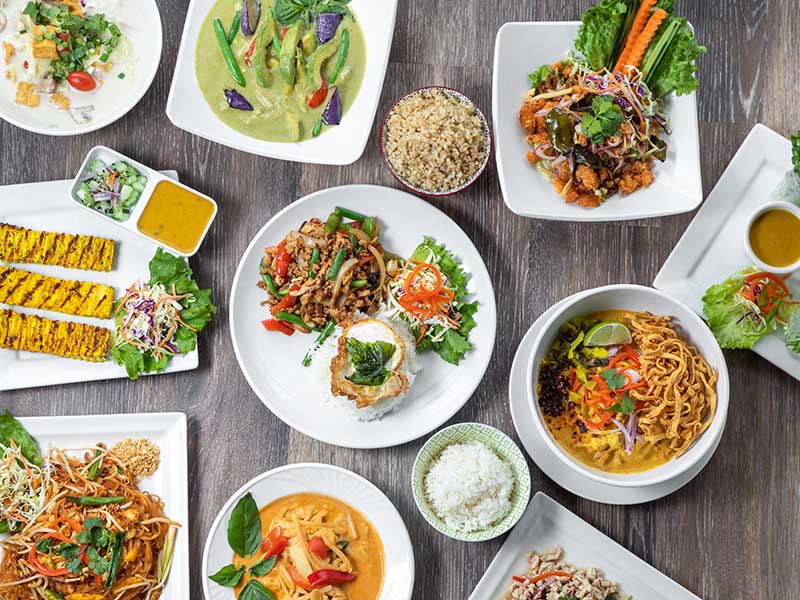
An Overview Of Thai Cuisine
Thai cuisine is one of the Asian cuisines characterized by a harmonious combination of sweet and sour flavors. Thai cuisine is also influenced by neighboring countries like Laos, Myanmar, China, and Indonesia.
In Thailand, the foods can have significant changes in flavor due to the geographic difference. Furthermore, the country also adopts Buddhism as a national religion. Thailand has roughly 40.000 temples, with 95% of the population practicing Buddhism.
1. Northeastern
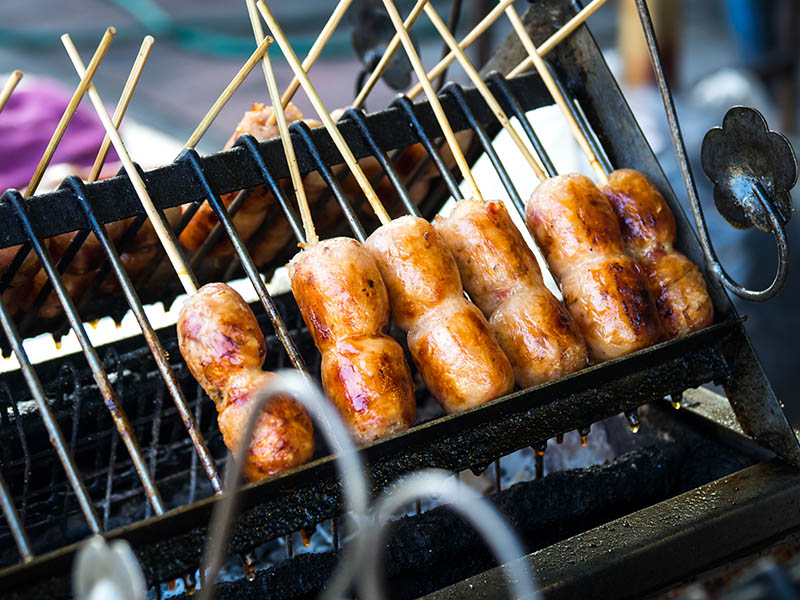
Northeastern Thailand is renowned for lush forests with exceptional resources of fresh Thai fruit and exotic vegetables. Because of its hot and humid conditions, people mainly rely on fermentation and preservation methods to keep their foods long-lasting.
Another thing to note about Northeastern is the famous Isan cuisine with a sharp flavor. This is mainly because of the influence of Laos cuisine, a country close to Thailand. Thai Northeastern possesses the flavor of regional herbs and vegetables.
Discover a wide range of foods from Northeastern Thailand.
2. Central
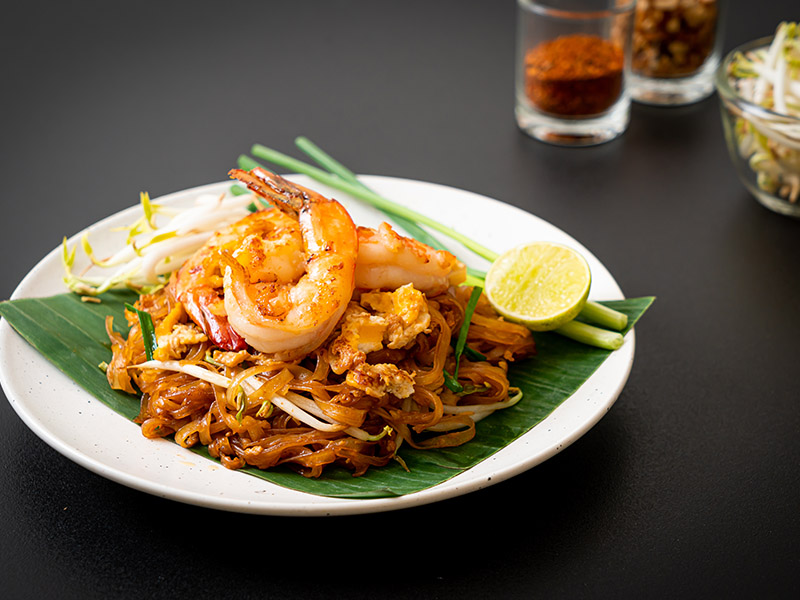
Many Thai consider Central cuisine the best combination of all the regions. The locals often take rice as the center of the meal to combine a variety of dishes with bold and savory flavors.
Since the Royal cooking style mainly influences Central Thai cuisine, many dishes tend to have sophisticated cooking procedures.
3. North
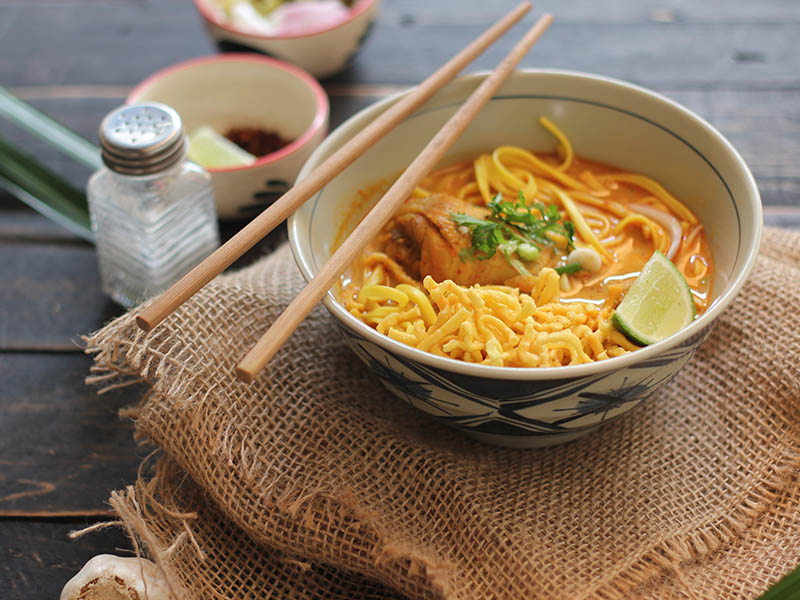
The North cuisine is usually less intense in sourness and sweetness than other regions. Thanks to the influence of neighboring countries’ cuisines, most Northern Thai delicacies taste bitter and sour.
The area is also home to many tribes like the Hmong, Tai Yai, and Yao. Therefore the taste of many foods may have a spicier and saltier flavor than in other regions. Many suggest North cuisine has a relatively mellow taste despite the spicy intensity.
Uncover the intriguing menu of Thailand staple delicacies right here.
4. South
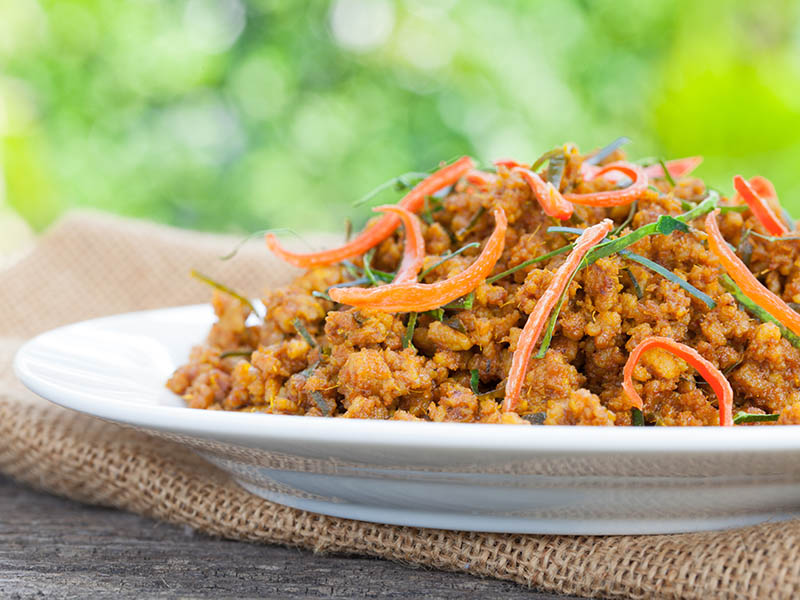
Finally is the South of Thailand; although many people may not get to taste a lot of Southern Thai dishes, the area is surprisingly popular with a diverse range of herbs. Furthermore, the South of Thailand is also famous for coconut, a highly-demanded ingredient in many Thai dishes.
Southern Thailand often illustrates a creamy taste from the appearance of coconut milk in the region’s specialties. In addition, local Southerners tend to have spicier dishes with many condiment combinations that mainly come from the influence of Indian cuisine. (1)
An Overview of Chinese Cuisine
China is a country with a deep culinary history. Their cooking influences and shapes many countries’ cuisine in Asia. People are often more intrigued to compare Chinese and Japanese foods as these two nations have a spanning history in cuisine.
However, I always encourage you to become an expert in Asian dishes by being able to distinguish between Chinese foods and other countries’ delicacies.
Although Chinese foods tend to characterize a certain spiciness level, some regions have different ingredients resulting in some unique flavored specialties (2). Another thing to note is China has a vast amount of herbal plants to incorporate into their meals to improve health.
1. Shandong Cuisine
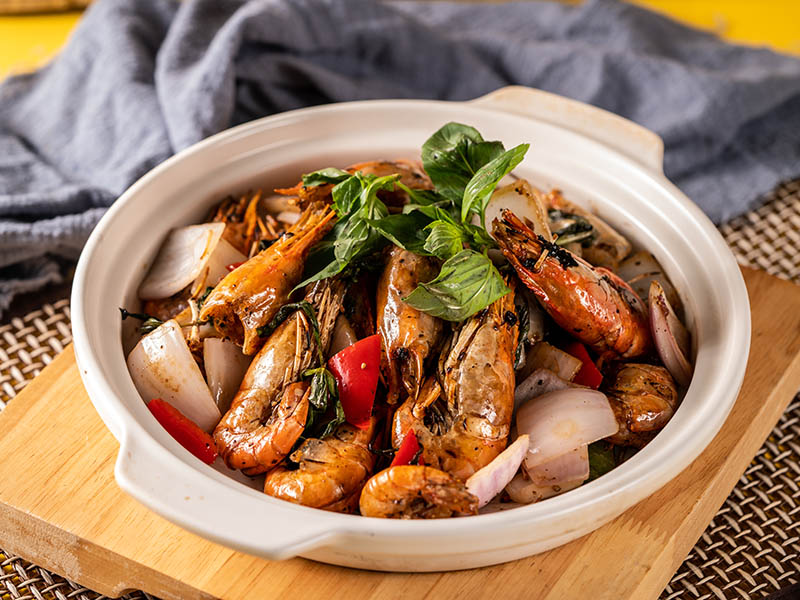
Shandong is a region located in the East of China that plays a major role in the country’s history and culture. The area cooking mainly depicts an addicting umami taste with a mild level of saltiness. Many Shandong specialties often strike the balance of sweet and sour.
The chefs in Shandong usually orient their cooking style around local ingredients. The region possesses unique cooking techniques like flash frying, braising, and crisp frying with syrup. In addition, Shandong is also popular for having diverse seafood dishes.
2. Cantonese Cuisine
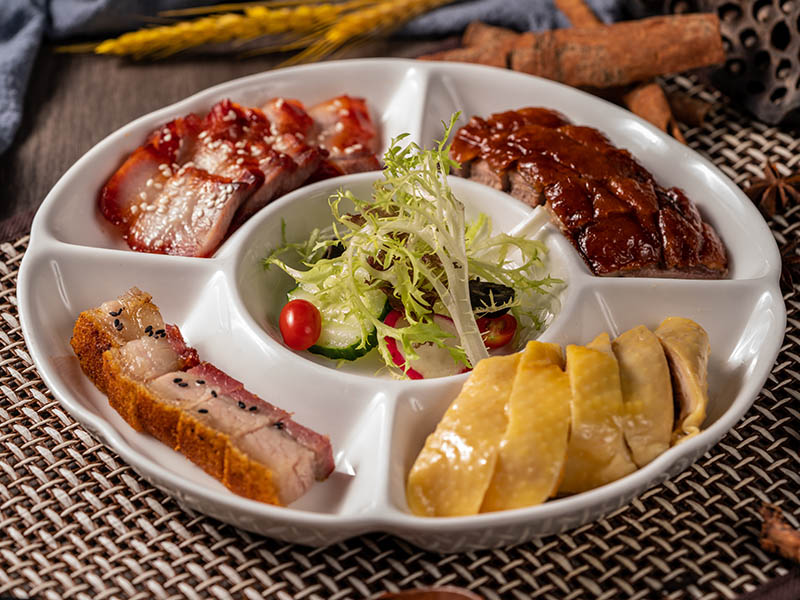
Cantonese cuisine (Yue or Guangdong) depicts a rich flavor in cooking methods and materials. Some suggest that Cantonese cooking has existed for more than 2000 years since the Han dynasty. Many Cantonese specialties commonly have a mild and natural taste.
Cantonese cooking techniques take seasoning seriously as it needs to highlight and complement the fresh ingredients. The dishes are usually light in summer and autumn, while spring and winter have heavier specialties.
Take a quick peek through this guide to understand more about Cantonese foods.
3. Hunan Cuisine
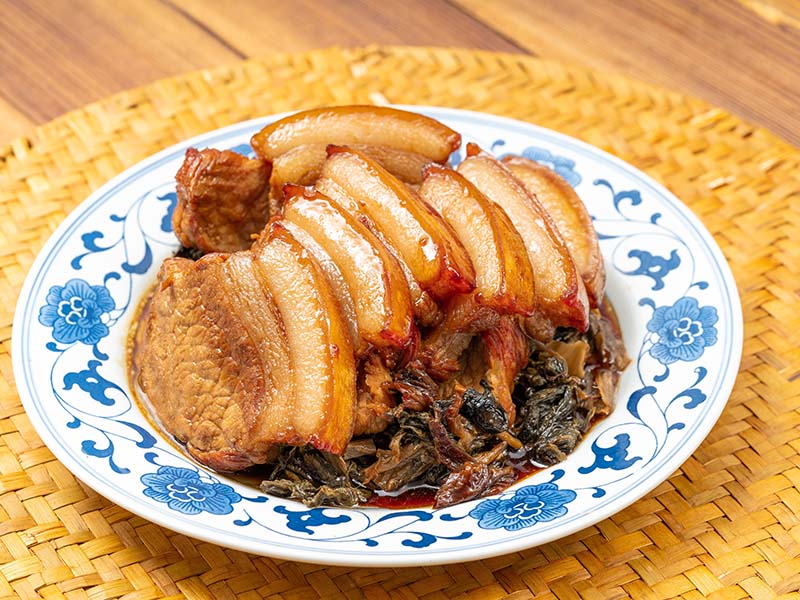
The cuisine of Hunan takes root in the Hunan province of south-central China. The region is famous for its pepper, which delivers an aromatic and spicy flavor to Hunan dishes. Aside from the spicy flavor, the locals of Hunan usually incorporate a certain saltiness into their cuisine.
Another thing to note is that many Hanan specialties tend to possess a darker color than other Chinese regions. In addition to chili, the Hunan province is renowned for using fermented soya beans as a condiment.
4. Szechuan Cuisine
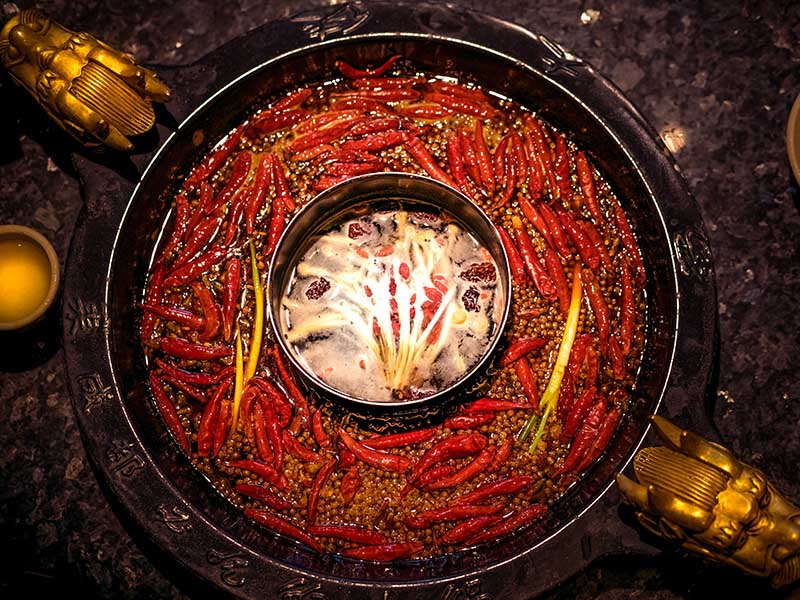
Sichuan or Szechuan is undoubtedly a famous food region due to its bold and sometimes extreme spiciness. Furthermore, this southwestern area impresses everyone with the cuisine of vibrant color and copious amounts of seasoning in most delicacies.
One remarkable example is hot pot, a specialty of Sichuan that incorporates hot and spicy local Sichuan peppercorn with aromatic spices. The standout condiment must be Sichuan’s bean paste, a cornerstone of Sichuan cuisine.
Discover the key elements of Sichuan’s unique spiciness.
5. Jiangsu Cuisine
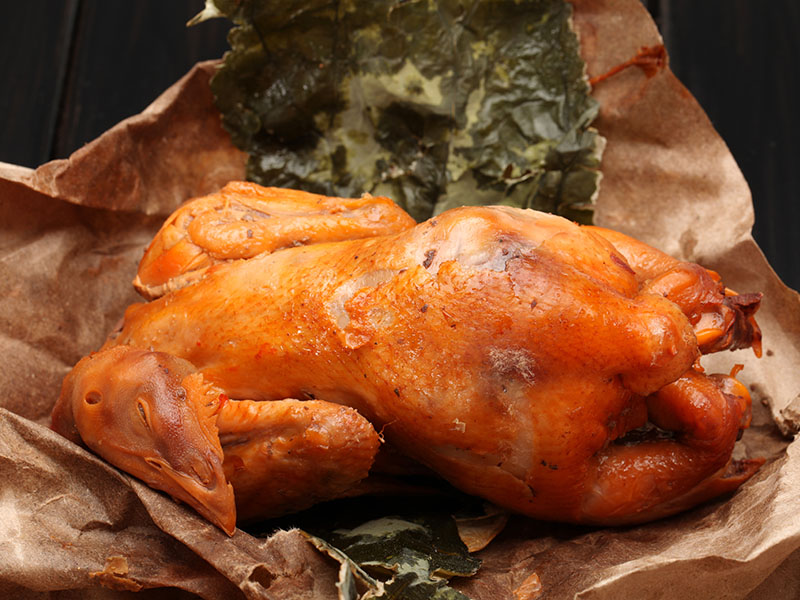
The Jiangsu area is to the North of Shandong; people often refer to Jiangsu cuisine as Su for short. With 2000 years of history, the region depicts an umami flavor with a sweet, mild, and fresh taste. Jiangsu is well known for simmering, stewing, and braising techniques.
Most Jiangsu specialties focus on presentation, making them more appealing to customers. Since Jiangsu is a coastal area, its cuisine revolves around seafood ingredients from the lake and ocean. Interestingly, Jiangsu cuisine produces many skillful chefs.
6. Zhejiang Cuisine
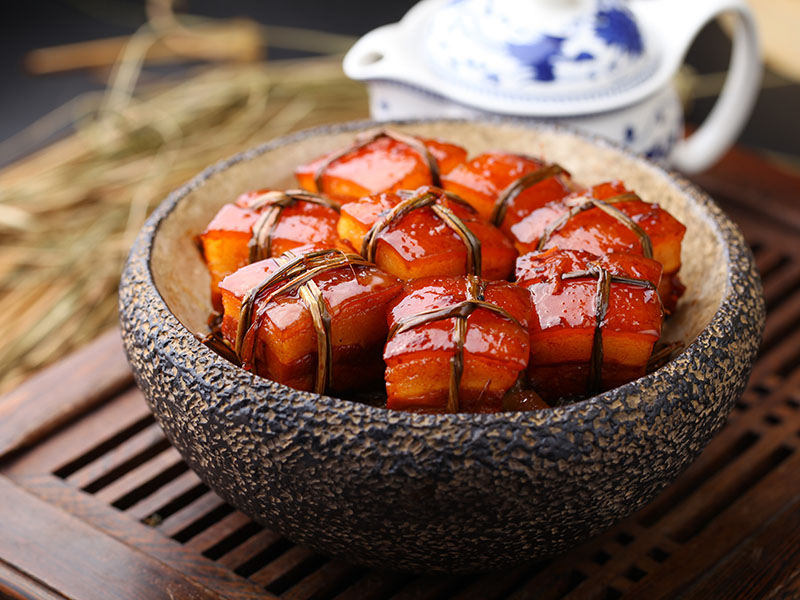
The Zhejiang province in East China is perfect for people looking to experience light and fresh dishes. The area has an abundant source of fresh seafood with a diverse amount of seasonal ingredients. The flavor mainly orients around the original taste of raw ingredients.
Generally, Zhejiang cuisine mainly depends on the season and the availability of fresh ingredients. The province’s population tends to utilize Shaoxing yellow wine, a unique condiment that helps Zhejiang foods have its signature style.
7. Fujian Cuisine
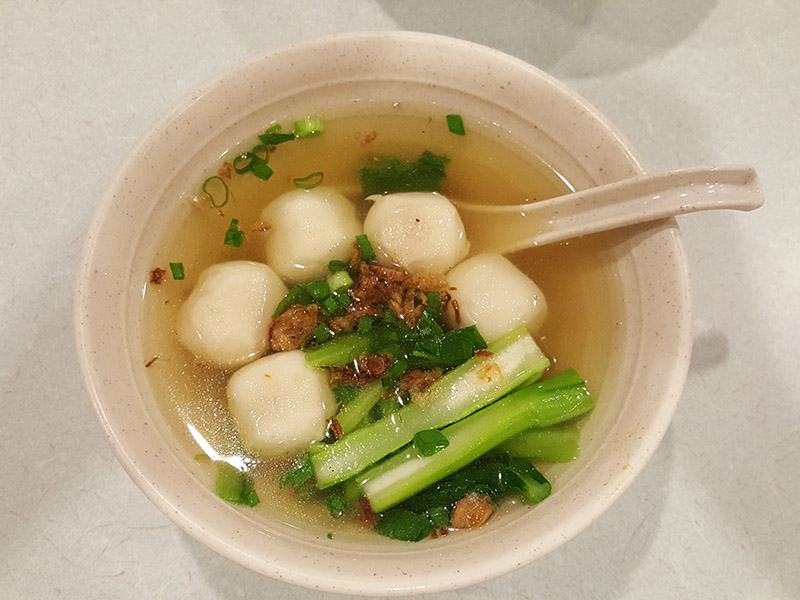
Fujian is a province that lies on the southeastern coast of China. The locals often refer to the regional cuisine as Min. It depicts a light flavor with less grease than other areas’ specialties. The Fujian province is blessed with ingredients from mountains and the ocean.
Chefs from this area take seasoning and cutting techniques seriously, creating a distinct look for Fujian delicacies. Commonly, the province population often uses shrimp sauce, red vinasse, and satay to season their dishes.
Take a look at the street food of Fuzhou, a city that represents the Fujian cooking method.
8. Anhui Cuisine
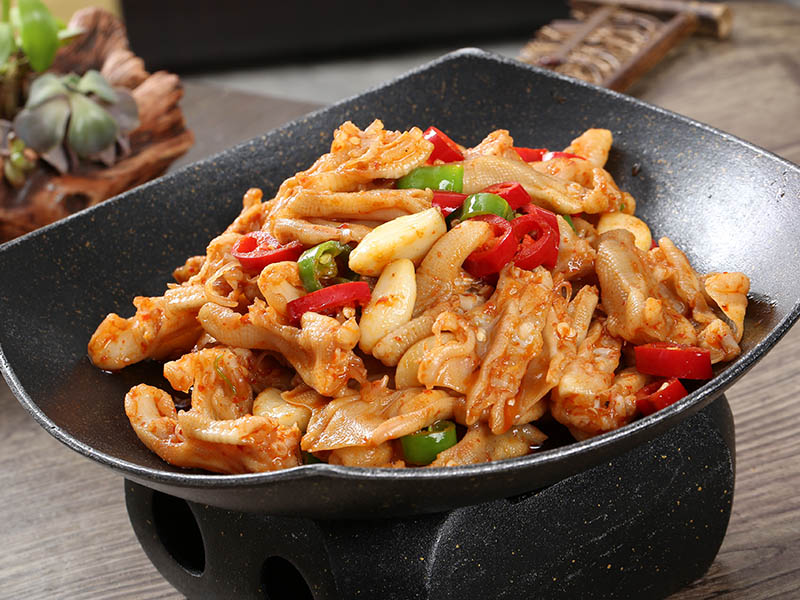
Anhui, or Hui cuisine for short, has over 1000 years of history from Huizhou, a city in southern China. The area has distinct cooking that utilizes wild ingredients for a light taste. Commonly, a variety of Anhui dishes use oil and display appealing colors.
With a mild climate, Hui cuisine usually features local ingredients like fish, bamboo shoots, or vegetables. Interestingly, Anhui is also famous for incorporating many Chinese herbs into the cooking process that provide consumers with sufficient nutrients.
Thai Food Vs. Chinese Food – Similarities And Dissimilarities
Both Thai and Chinese foods are from Asia; however, each country possesses different characteristics that define its uniqueness. Here’s a quick recap of what you need to know about the differences between Thai and Chinese.
Similarities Between Thai And Chinese Cuisine
For starters, Thai and Chinese often pair dishes with either noodles or rice. The Chinese boast a wide range of noodle types for this purpose. That is one of the rarities that these two cuisines share.
Another thing to note is both countries have regional condiments and ingredients which create distinct flavors for those areas.
Dissimilarities Between Thai And Chinese Food
Although Thailand and China are both Asian cuisine, the two countries have many differences that are easy to distinguish. Here are some of the standout features of Thai and Chinese cuisines.
1. Taste
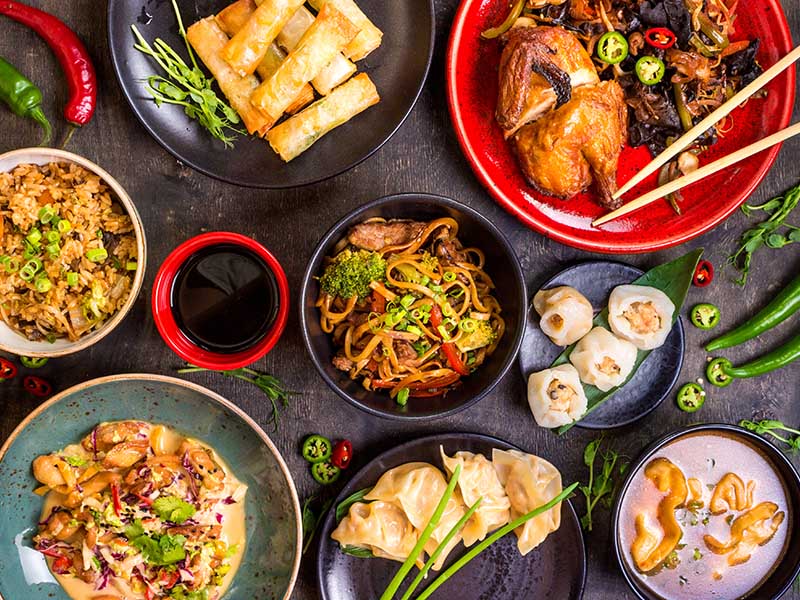
Regarding flavor, Thai dishes usually display four significant characteristics: spiciness, saltiness, sweetness, and sourness. However, the two most common features of any Thai delicacies are spicy and sour flavors.
Therefore, you will frequently encounter local Thai using lemon juice or any acidic additives to accompany the spicy fresh chilies. In addition, Thai cuisine also includes a variety of herbs to elevate the dishes’ overall taste significantly.
In general, Chinese cooking depicts an intense flavor of umami and spicy. Some dishes may have delicate cooking procedures that require various condiments to produce the most authentic flavor.
Furthermore, Chinese people often use garlic and onion as the base aroma for many dishes. In short, Chinese cuisine has a diversified color with rich and aromatic flavors.
Let’s try some of the tastiest delicacies in Thailand!
2. Condiments
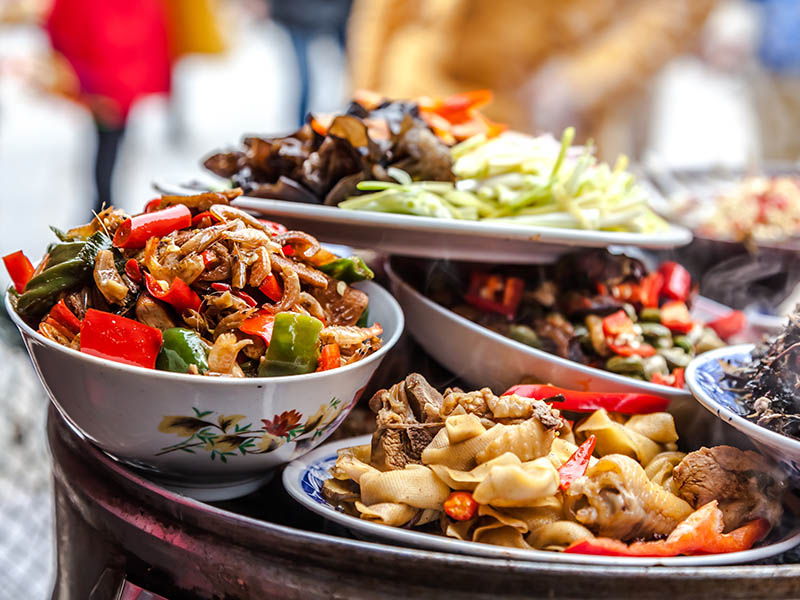
Thanks to the influence of India, many Thai chefs are experts in bringing together a variety of spices to a balanced level. Like many Asian countries, fish sauce is the holy grail of condiments in Thai cooking.
Of course, you can’t ignore coconut, a staple ingredient of many Thai curries and soups. People love adding thick coconut milk to bring a rich and creamy flavor to the table.
As for China, each region has unique condiments that highlight the flavor of the area’s specialties. For example, Sichuan is highly well-known for its peppercorn and chilies to produce an intense spiciness of Sichuan cuisine.
3. Presentation
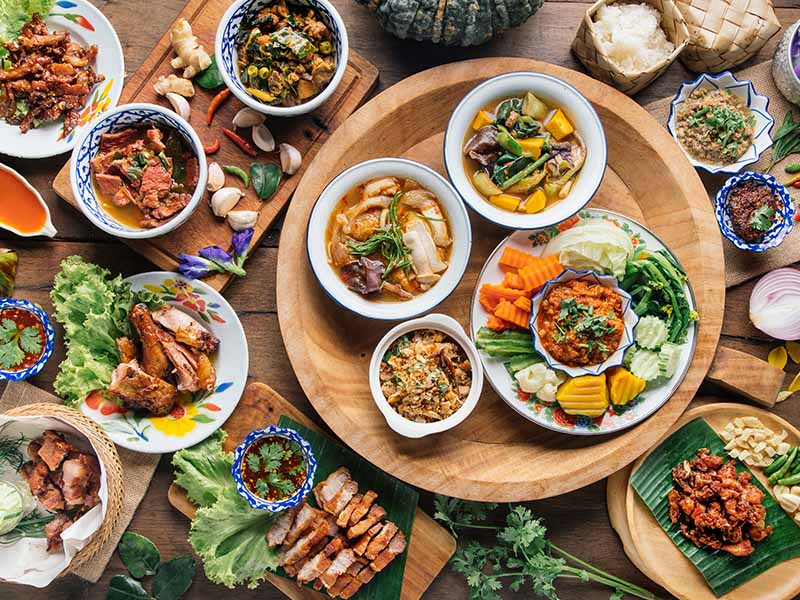
If you ever travel to Thailand or experience Thai cuisine in restaurants, you will see that most dishes have a certain vibrant presentation. Since Thai cooking calls for various herbs and spices, the overall display is eye-catching and stimulates your taste bud.
Typically, Thai locals hand-carve flowers from vegetables to decorate their dishes. Most Thai specialties come in bite-size portions. This is mainly the influence of Buddhism when people avoid serving a whole animal.
Like Thai cuisine, Chinese cooking also pays a lot of attention to colorful presentations. However, the Chinese way of presenting food tends to have a deep meaning behind it or serve specific requirements of the dish.
Many Chinese dishes typically aim to balance both taste and presentation, similar to how Yin and Yang work.
4. Ingredients
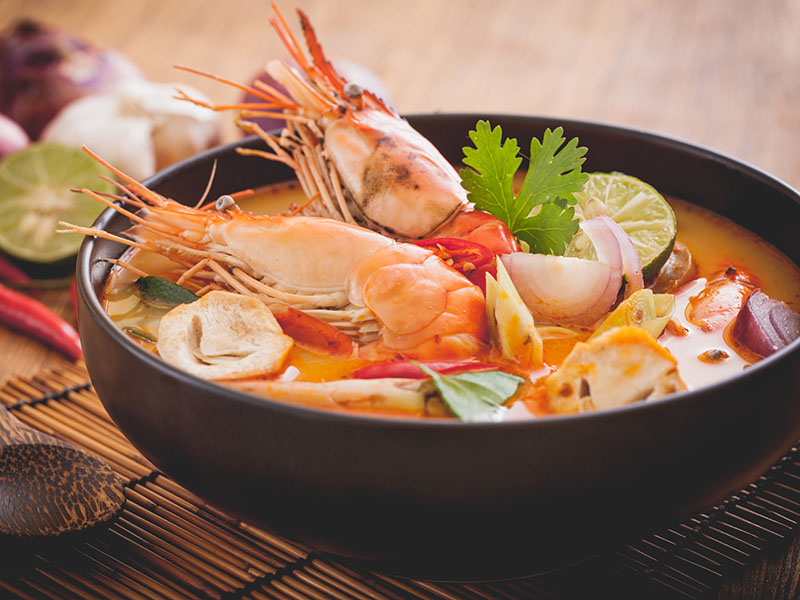
As a tropical country, Thailand has wide options for fresh ingredients like vegetables and herbs. Typically, these ingredients last all year round, giving people a lot of choices to alternate them in dishes.
As for China, many regional delicacies rely heavily on seasonal ingredients. Therefore, Chinese locals use various methods to preserve foods for later usage.
Find out the differences between each regional cuisine in China!
5. Oil Usage
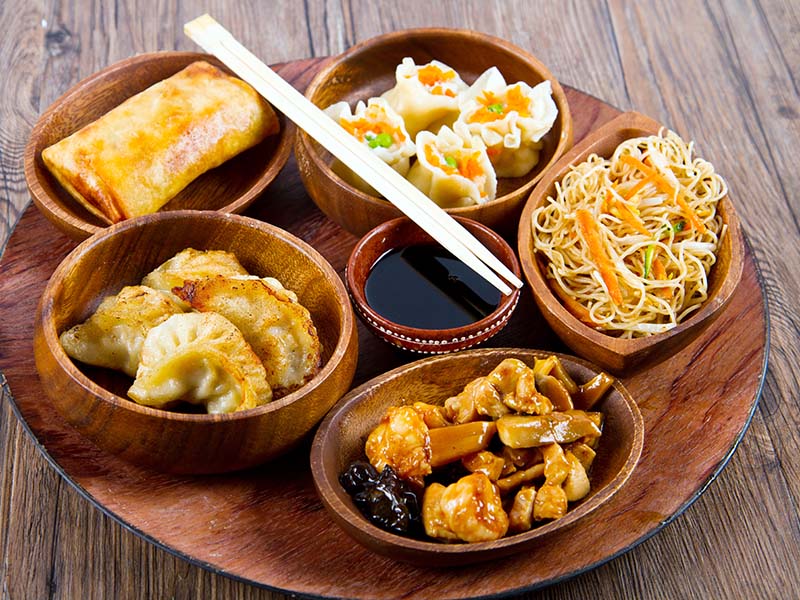
Thailand is famous for using fresh delicacies with low oil. Since many Thai dishes are not bound by an oily base, they are usually easy to digest.
In many Chinese cooking techniques, oil is the main element to create the base flavor for dishes. Therefore, it’s normal to see that Chinese delicacies are much more greasy and oily than Thai dishes.
Health Benefits Between Thai And Chinese Foods
Many people often wonder whether Thai or Chinese food is a healthier option for the family. For that, I’ll give you some ideas on which country’s cuisine is a more solid choice for a healthy meal.
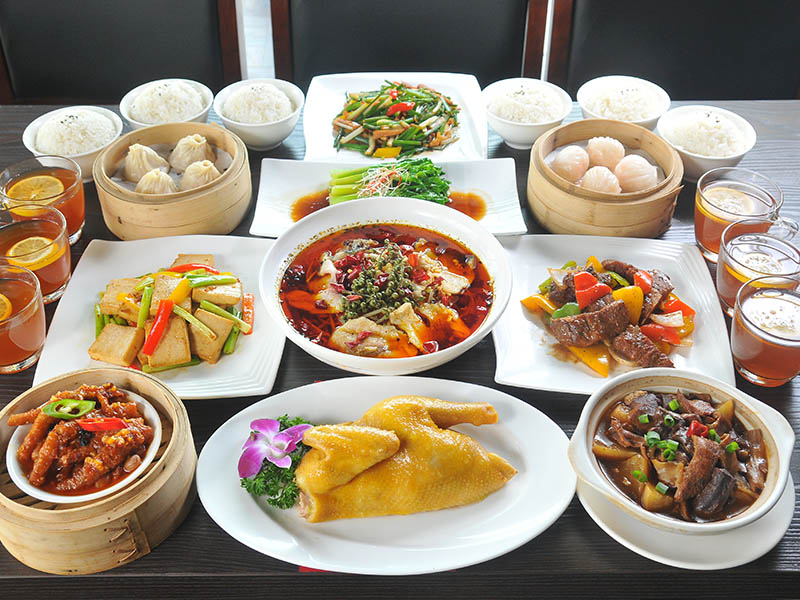
Thai Foods
Starting with Thailand, the country mainly utilizes fresh herbal ingredients, explaining why many Thai delicacies provide a great source of vitamins and nutrients. Although Thai dishes may barrage you with various flavors, they are relatively light and easy to digest.
Chinese Foods
While Chinese cuisine undoubtedly possesses many valuable medicinal dishes to improve health, the country is relatively reliable in preserved ingredients. In addition, many Chinese dishes are oily and have sugar additives that may cause health problems in the long run.
Final Result
If you have to pick one, Thai dishes are easier to digest and have great health benefits with decadent flavor. However, that is not to say China doesn’t have many healthy delicacies. Remember, this is an overview of the foods of the two countries.
At the end of the day, the choice is up to you. If you want an easy-to-digest dish with plentiful vegetables, Thai food is an ideal candidate. In return, Chinese food provides you with addicting dishes with unique regional flavors that depict different cuisine across the country.
If you’re wondering why Thai food is popular in the US, this video will answer your question.
3 Thai Dishes To Try Right At Home
I know some people are hungry already. Therefore, I have some iconic Thai recipes you can whip up for your next meal. Simply follow the instructions, and you will soon master these Thai specialties in no time.
1. Pad Thai (Thai Stir-Fried Noodle)
Pad Thai is one of the most iconic representatives of Thai cuisine. The Thai specialty is a combination of stir-fried noodles with savory ingredients. The invention of Pad Thai dates back to the 1930s.
Commonly, Thai locals stir-fry the ingredients in a wok (Chinese deep pan) with high heat to get a signature smoky flavor. You often need a combination of eggs, bean sprouts, and chicken breast to accompany the rice noodles.
Ideally, all the ingredients should be coated with a shiny sauce consisting of fish sauce with lime juice, brown sugar, and soy sauce. Finally, sprinkle some crushed peanuts to add nuttiness to your Pad Thai.
2. Som Tam (Thai Papaya Salad)
If you ever get to travel the Northeastern region of Thailand, I highly suggest giving Som Tam a shot because it’s an iconic dish of Isan cuisine. This Isan specialty utilizes shredded young papaya as the cornerstone ingredients to mix with sweet and sour sauce.
Because of the crunchy nature of young papaya, it’s perfect to combine with julienned carrots, dried shrimps, and cherry tomatoes. Although you can mix Som Tam in a regular bowl, locals often bust out the mortar and pestle for a more traditional approach.
Furthermore, Som Tam is highly customizable with optional ingredients like green beans, eggplants, or Thai basil leaves.
Som Tam is a refreshing Thai salad to make right at home.
3. Tom Yum Goong (Tom Yum Soup)
Tom Yum Goong or Tom Yum soup is a popular delicacy of Central Thai cuisine. The dish is notorious for having a heavy kick of spiciness that may even be challenging for Thai indigenous. However, you can also make a milder version of Tom Yum Goong by adding evaporated milk.
The main focus of Tom Yum Goong is succulent shrimps cooked in a savory and spicy broth. In addition, you may want to use fish sauce to season the soup. The inclusion of evaporated milk makes the Tom Yum Goong milder in terms of flavors, but it depends on your liking of the broth.
Commonly, the broth combines galangal (southeast Asian condiment) with a couple of lime leaves and lemongrass for a refreshing taste. The result is an orange Tom Yum broth with a rich and addicting flavor.
3 Chinese Dishes For Your Next Meal
Whenever you crave some Chinese delicacies, you can bring that Asian taste into your house with these recipes. They are easy to make yet pack a heavy punch in flavors. These recipes allow you to experiment with many traditional Chinese cooking methods.
4. Dumplings
It’s no secret that the Chinese dumpling is one of the most beloved dishes worldwide. The Chinese delicacy is simply stuffing a dough wrapper with flavorful ingredients. Many believe the first man to invent dumplings was Zhang Zhongji, a Chinese practitioner.
The most popular filling for traditional dumplings is minced pork with cabbage, ginger, and soy sauce. Typically, you want to crack in an egg to help bind the ingredients. As for the dough, I suggest a batter consisting of all-purpose flour with water.
Next, place a reasonable amount of filling into the dough wrapper and seal it tight. The most traditional methods of cooking dumplings are to either boil or fry them. Boiling the dumplings results in a soft dish, while pan-fry produces a crunchy dough layer.
This instruction will easily help you recreate Chinese dumplings from scratch.
5. Gong Bao Ji Ding (Kung Pao Chicken)
Gong Bao Ji Ding or Kung Pao chicken is a specialty of Sichuan province, a region of China popular for its spicy cuisine. Kung Pao chicken is highly addictive with a spiciness flavor of various chilies and Sichuan peppercorn.
If you’re looking to recreate Kung Pao chicken at home, Sichuan pepper is the key element to creating the authentic flavor. In addition, you want to marinate the chicken pieces with Shaoxing wine, cornstarch, and soy sauce.
As for the sauce, I suggest a mixture of honey, vinegar, and Shaoxing wine. Ideally, you should incorporate the sauce with the chicken during the stir-frying process. Before you pour in the chicken, don’t forget to infuse the oil with chilies and Sichuan peppercorn.
6. Mapo Tofu
Are you ready to burn down your taste bud with Mapo tofu? Yes, the dish is super spicy and may leave your tongue numb for a couple of hours after consumption. The delicacy is another representative of Sichuan spicy cuisine.
If you’re new to Mapo tofu, I highly recommend pairing some Chinese beverages to help ease the intense spiciness. Whatever the case, it’s always best to have a drink ready to cool you off.
Before adding in the tofu, you need to toast the chile in oil to set the tone for the dish. Aside from the chilies and Sichuan peppercorn, I suggest throwing in ginger, spicy bean sauce, and ground pork. In addition, you may want to simmer the spicy concoction with chicken stock.
While you let the stove handle the spicy mixture, grab your tofu and slice it into bite-sized pieces. Then, throw in some cornstarch to thicken up the spicy Sichuan sauce. For a final touch, gently work the tofu into the red hot sauce to avoid breaking the tofu by accident.
Sit back and relax while watching a professional Chinese chef materialize Mapo tofu right before you.
FAQs
If you’re still having some questions lingering in your mind, I hope this FAQ section can satisfy your curiosity. Remember, these are the popular questions that people often ask when Chinese and Thai foods are the main focus of the conversation.
Is Thai Or Chinese Food Your Go-To Option For The Next Meal?
As you can see, Chinese and Thailand have a wide range of cuisines that have different adaptations of ingredients to produce their specialties. The two countries’ dishes are simply recognizable with unique characteristics that illustrate the culture and people.
If you know any more exciting features between Thai and Chinese foods, tell everyone about them in the comment section. I can’t wait to hear more opinions from everyone. You can also share this post with someone having difficulty deciding between Chinese and Thai dishes.
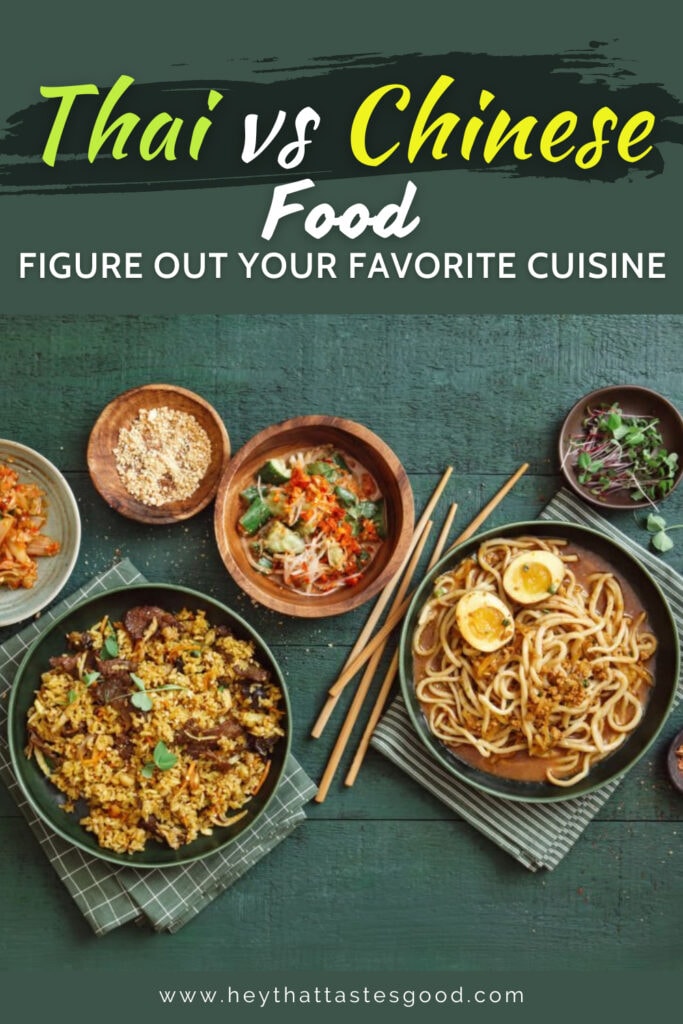
References
- En.wikipedia.org. 2022. Thai cuisine – Wikipedia.
- Mfa.gov.cn. 2022. Chinese Cuisine.


Linda Dean
Expertise
Culinary Arts, Food Journalism, Global Cuisine, Exploration, Recipe Development, Cultural Food Studies, Culinary Travel and Storytelling
Education
Culinary Institute of America, Hyde Park, NY
Program: Associate in Culinary Arts
Focus: Developed a comprehensive understanding of global cuisines and essential cooking techniques. Engaged in intensive hands-on practice in both kitchens and real-world settings, guided by expert chefs. This program emphasized the application of culinary skills in professional environments, preparing students for a variety of roles in the culinary industry.
City, University of London, London, UK
Program: BA Journalism
Focus: Gained expertise in media studies with a strong foundation in reporting, editing, and communicating. While the program focuses broadly on journalism, the skills acquired apply to food journalism, including the ability to analyze and report on food culture and culinary trends effectively.
Linda Dean is an experienced chef and food writer who loves exploring flavors from around the world. Trained at the Culinary Institute of America, Linda has spent over ten years mastering the art of making dishes that truly represent different cultures. She also studied journalism at City, University of London, which helps her write engaging stories about these foods.
On heythattastesgood.com, Linda shares recipes that bring the world’s kitchens to her readers. She focuses on authentic tastes and the stories behind them, making it easy for anyone to try international cuisine at home.